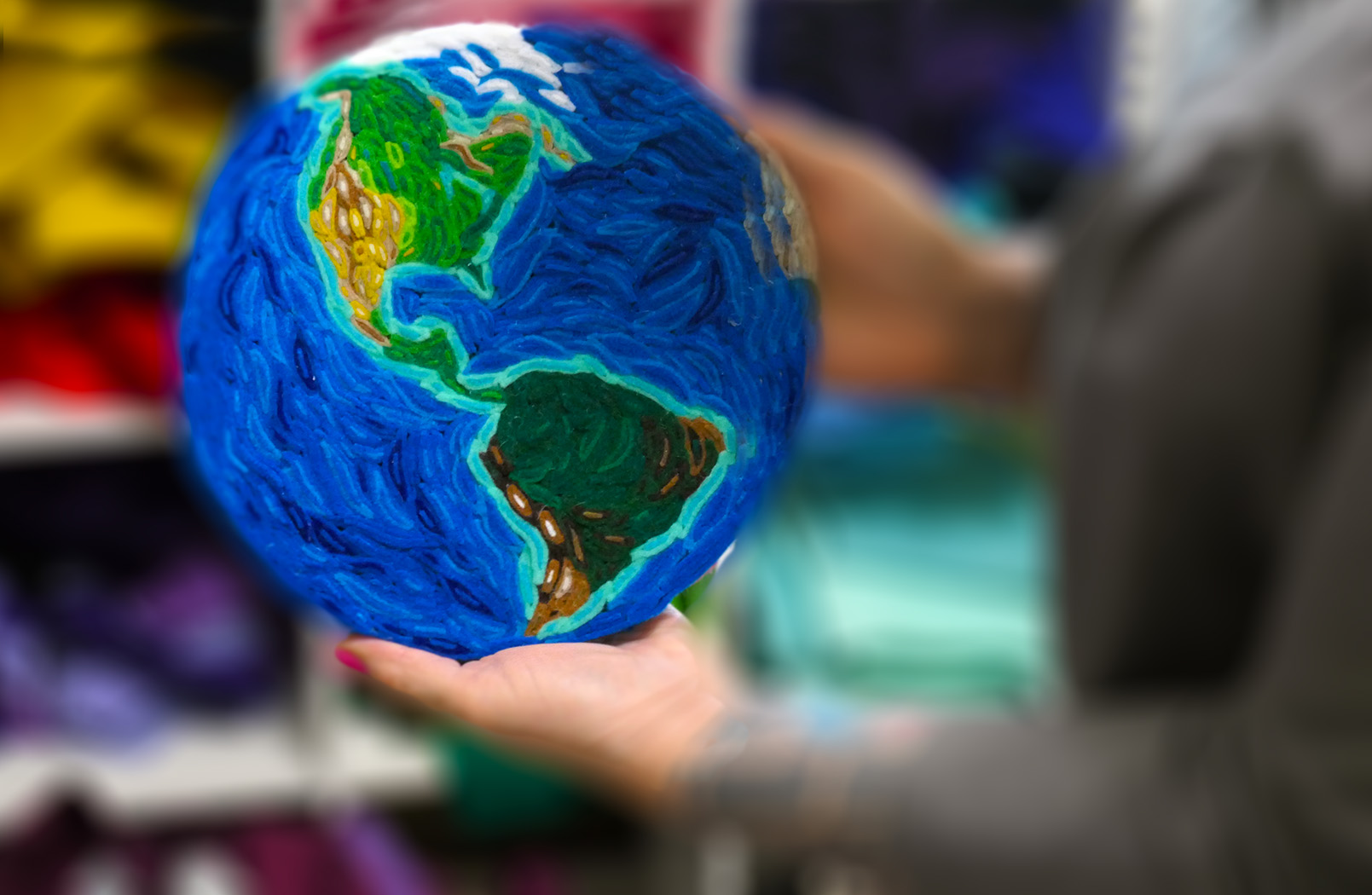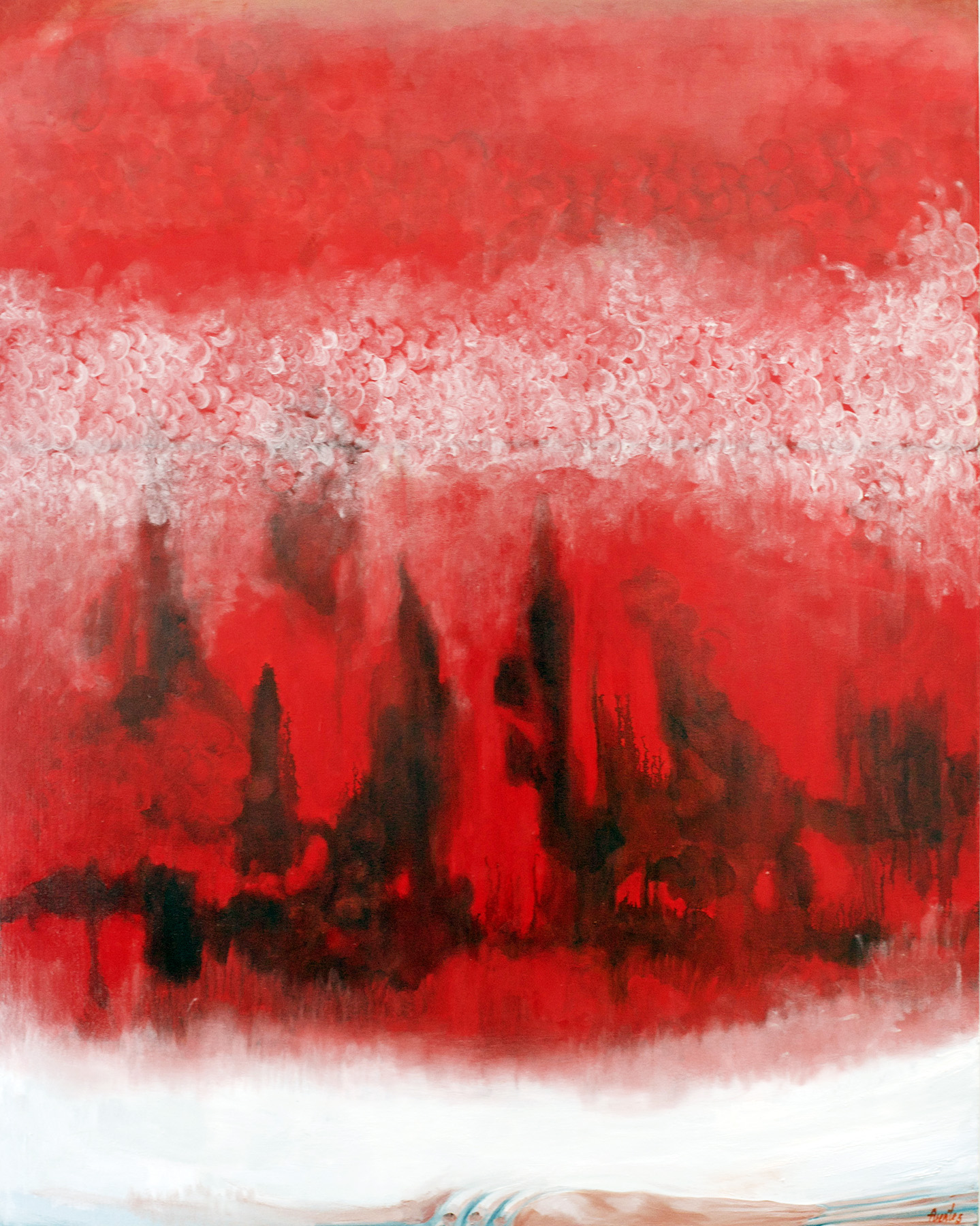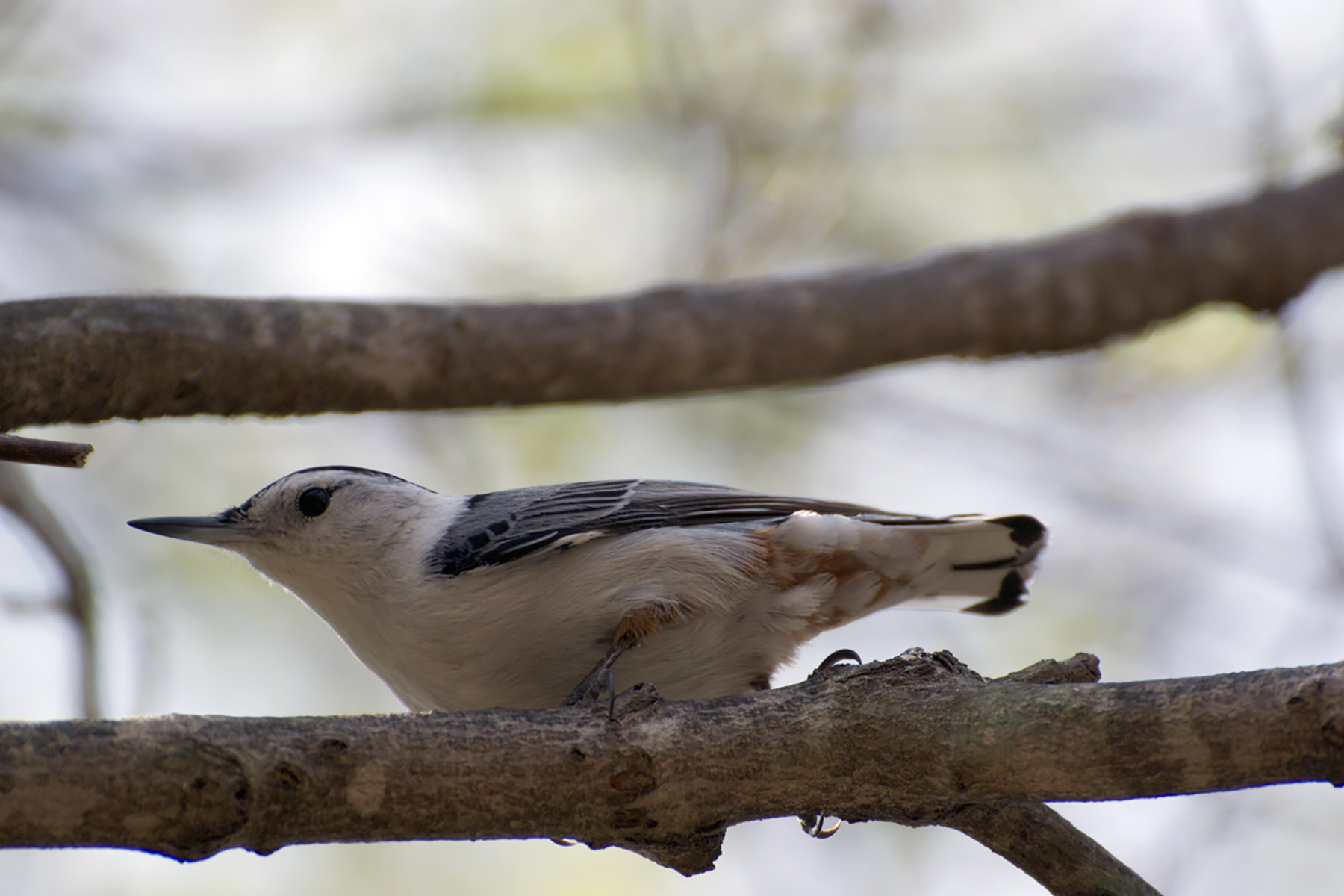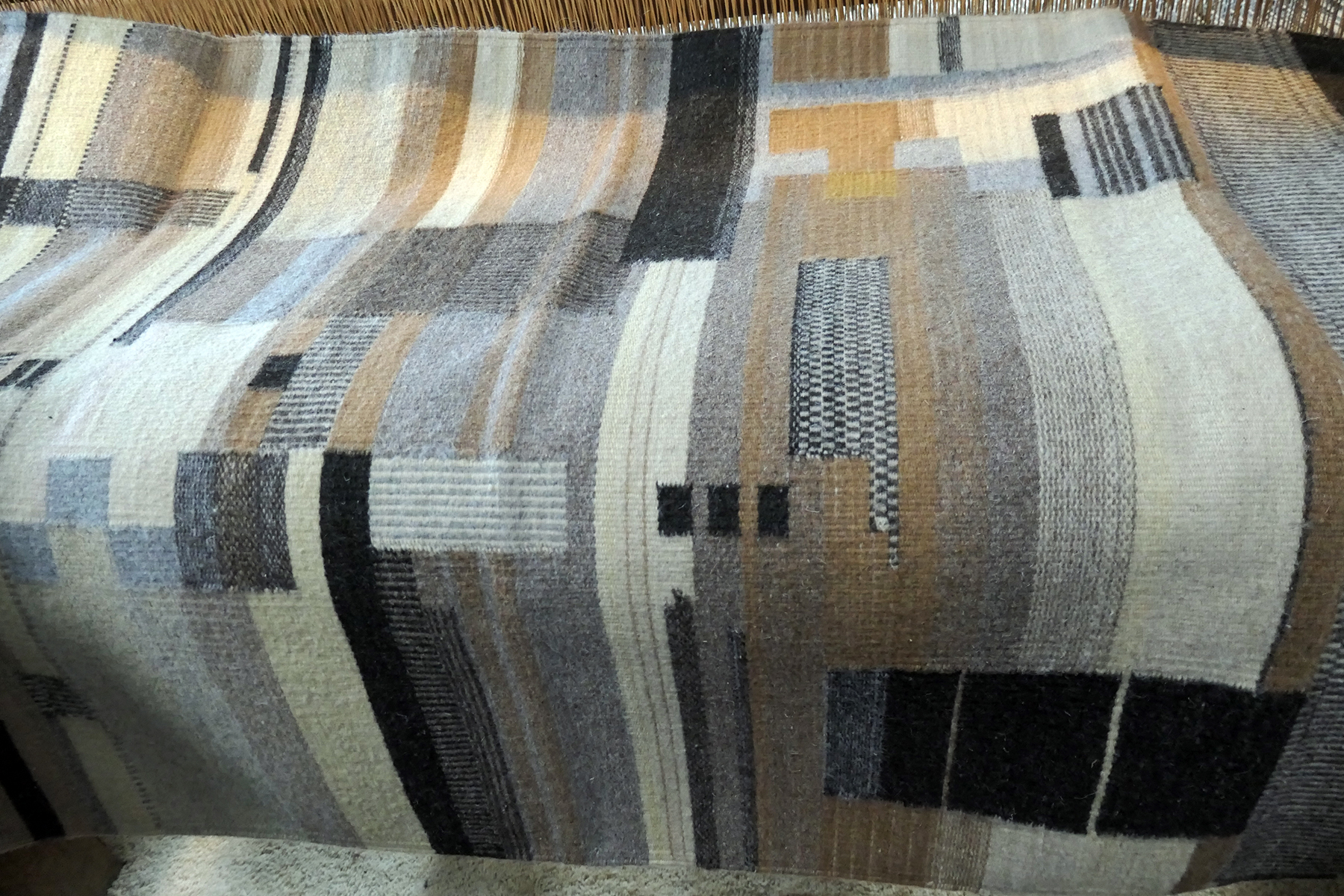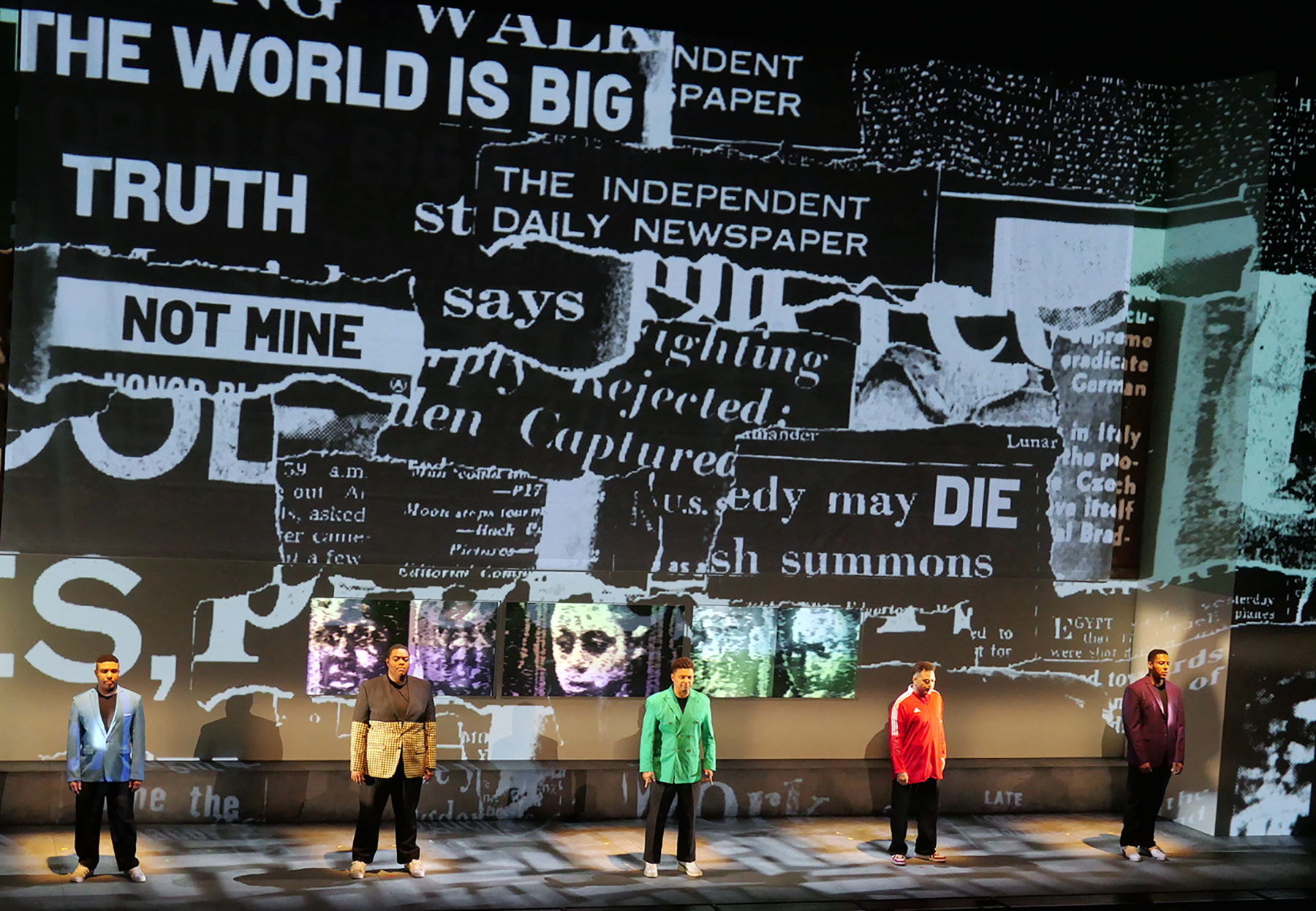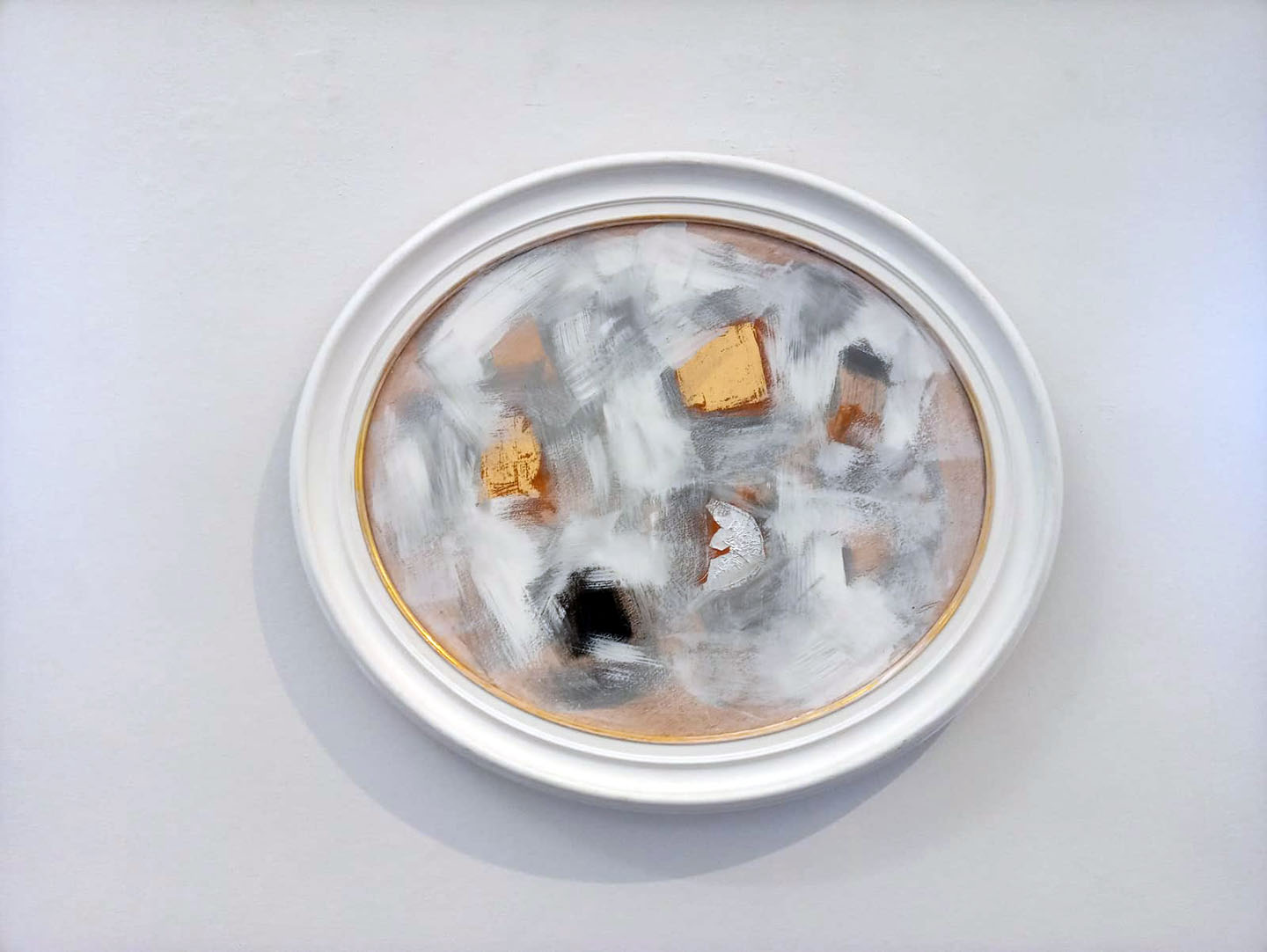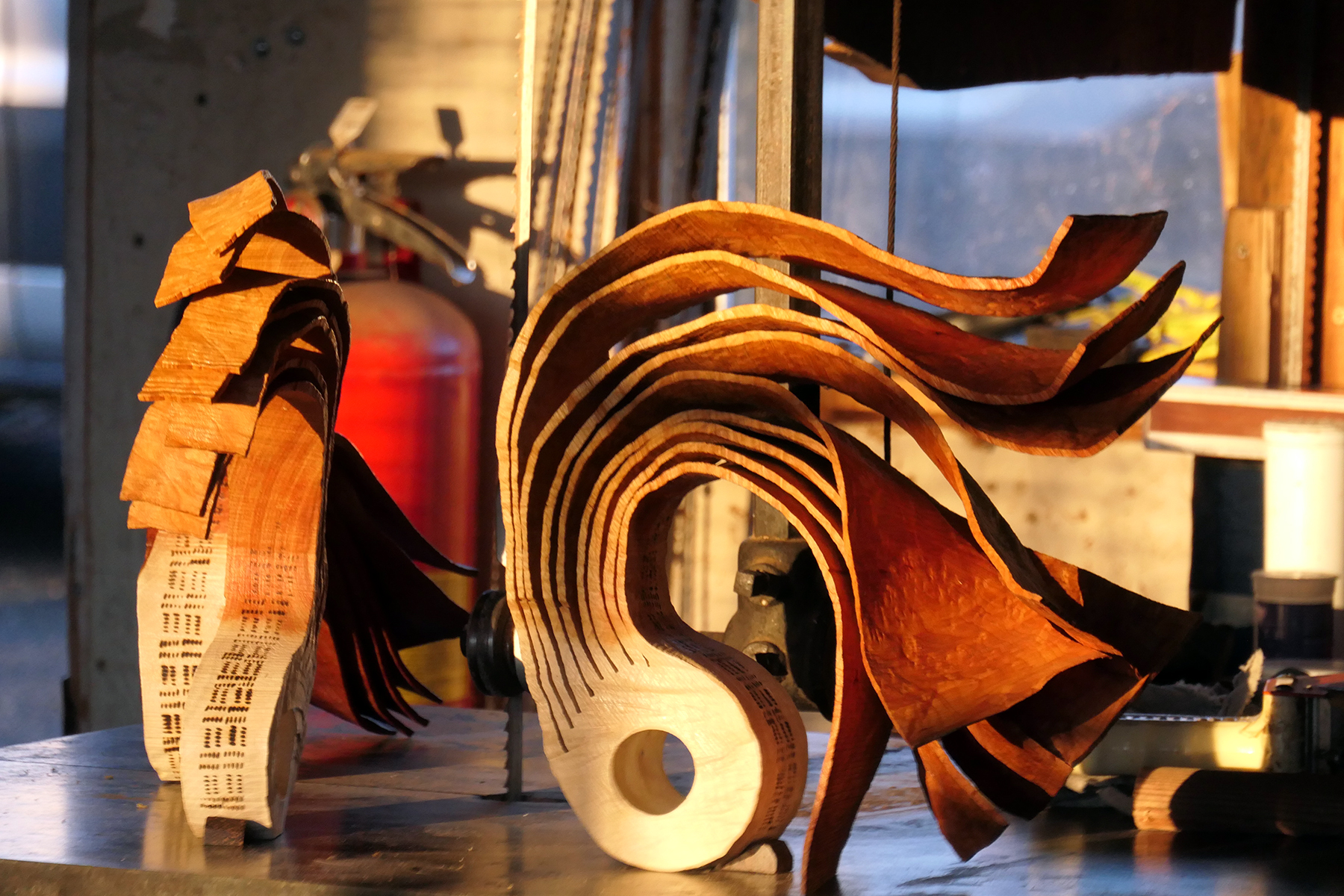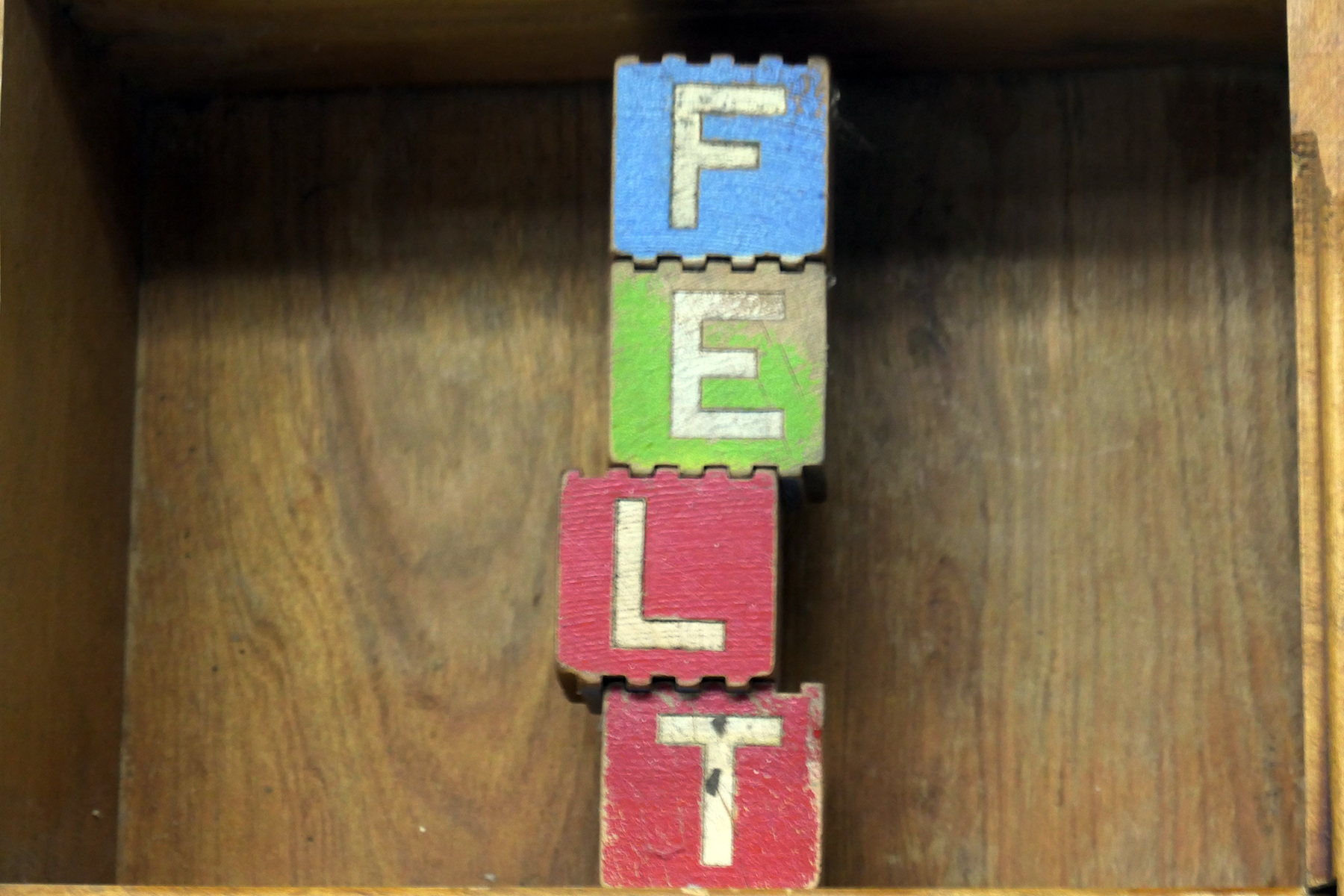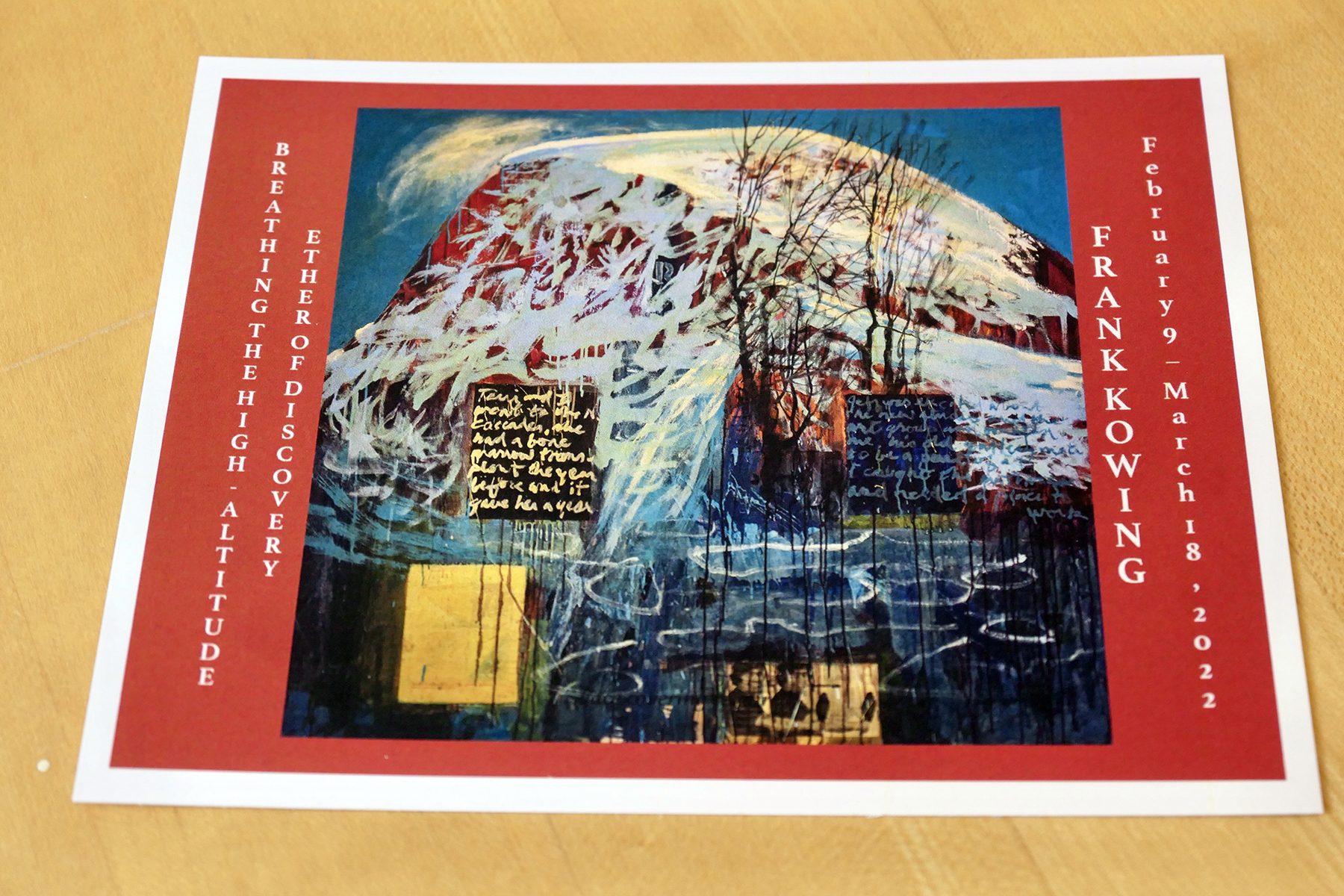“To practice any art, no matter how well or badly, is a way to make your soul grow. So do it.” — ― Kurt Vonnegut, A Man Without a Country
***
The last time I was surrounded by, no, immersed in dots, was during a visit to The Broad, L.A.’s museum of contemporary art. If you braved the eternal lines for Souls of a Million Light Years Away, you were accorded exactly 45 seconds to explore the experience once you entered a room full of mirrors and LED lights – guard with stop watch on hand standing outside and calling you out. The installation by nonagenarian artist Yayoi Kusama, obsessed with polka dots, fully insisting that we are all connected souls in the world, felt more spectacle than art, ready for the Instagram crowd.
My visit to Xander Griffith, one of the fiber artists for the Exquisite Gorge II project at Maryhill Museum this summer, put me among the dots again, this time made from felt – but the experience could not have been more different, on so many dimensions, length of time and friendliness of interaction included.
Practicing his art might make his soul grow – looking at it sure lifted mine.

Xander Griffith sitting underneath one of his felt “paintings.”
———————–
THE EXQUISITE GORGE PROJECT II
“…a collaborative fiber arts project featuring 13 artists working with communities along a 220-mile stretch of the Columbia River from the Willamette River confluence to the Snake River confluence. The project, again initiated by Maryhill Museum of Art and following the original one by printmakers in 2019, takes inspiration from the Surrealist art practice known as exquisite corpse. In the most well-known exquisite corpse drawing game, participants took turns creating sections of a body on a piece of paper folded to hide each successive contribution. When unfolded, the whole body is revealed. In the case of The Exquisite Gorge Project II, the Columbia River will become the ‘body’ that unifies the collaboration between artists and communities, revealing a flowing 66-foot work that tells 10 conceptual stories of the Columbia River and its people.”

———————–

Originally from Arizona, Griffith is a quick-witted young artist who discovered felt some eight years ago and has pursued working with it with a passion ever since. (He used to do Improv – would have loved to see him there as well!) One of the inspirations came from a chance encounter at the Portland Art Museum when he was visiting Portland from San Diego where he then lived and collaborated with the non-profit arts organizations Sol Diego Arts Collaborative and the San Diego Collaborative Arts Project, working on diverse large-scale creative projects. With no connection to pointillism or any other impressionist artist – Griffith started to work in shipping right after high school, never exposed to formal art training – he was struck by the effects of this painting by Théo Van Rysselberghe.

Theo van Rysselberghe Plage à marée basse à Ambleteuse, le soir (Beach At Low Tide, Ambleteuse, Evening) 1900
He started to cut, roll, shape and manipulate prefabricated felt, the kind you can purchase at any craft store, building, with a hot-glue gun, tableaux that contain entire worlds .




There is no shyness around color, partly driven by what is available, partly an expression of the enthusiasm Griffith brings to describing a world containing beauty. He used to buy the acrylic or rayon-wool blend fabrics by the yard. Eventually he could afford bolts, then cartons of bolts, which lowers the risk that the manufacturers change hue or saturation while he’s in the middle of a project.


Nature in all of its variation is a focus of the displays, but you have to look for it – the felt paintings manage to surprise you with a lot of hidden detail, in color as well as form, once you’ve gone beyond the first overall impression of a riot of saturated pattern. The art reveals itself really with successive inspections, making you interact much more actively with each piece than you would have presumed. (Find the frog or the heron below.)



Griffith is closely connected to nature, living with a rather large snake, a rabbit, and the occasional injured squirrel being nursed back to health, together with his longtime partner in a duplex in Vancouver, WA. The rooms are filled with his creations, a joyous riot of shapes and hues.

Lou Palermo, Maryhill’s Curator of Education, in conversation with the artist.
After the first years of the typical emerging-artist struggles, he was chosen to display his art at Portland Airport. The tableaux were exhibited along the entire Concourse B and thousands of people encountered them. He’s not lacked for commissions ever since, now able to create his art full-time. Here he explains in a short clip his approach to making these felt paintings.


I was taken by the fluidity of the work, unfiltered and unafraid, a sense of improvised decisions guided by intuition, and occasionally “corrected” by removing misplaced sections through application of heat from the back (a great willingness to sacrifice all that labor-intensive placement.) This is one of the contrasts that I alluded to earlier, when remembering Yayoi Kusama‘s work: if you look at the dot patterns on her ubiquitous pumpkins there is nothing that is not pre-calculated to the millimeter, and precision reigns supreme.

The Japanese artist has freely talked about the traumatic events in her early years during a childhood burdened with parental abuse, and I have always wondered if there was an obsessive, even compulsive yearning to control environments with precision, despite their seemingly cheerful subjects.
***
I had another association to Griffith’s approach with something much more closely related visually: Aboriginal Dot Art. A short overview of the history of Australia’s most famous art form can be found here. The almost 80.000 years old indigenous culture without a written language was ephemeral in its art. Some rock paintings survived, but most of the stories told and symbols transmitted were drawn on sand or bodies, quickly removed, meant to preserve ancient knowledge within tribal boundaries, kept secret from outsiders.
In 1971, dot paintings found their way into permanence for the first time, when Aboriginal people were encouraged by a teacher, Geoffrey Bardon, to draw and paint murals, then paint on canvas. Given the general visibility of the art, the need to preserve cultural symbols, it is speculated, led to heavy layering and over-dotting of the paintings as a way to hide and protect their sacred elements in the works that held special internal cultural value.


Yumari by Uta Uta Tjangala, 1981. Courtesy of the British Museum
One can see some similarities in the way animals are embedded in Griffith’s dotted worlds. What sets his work apart, though, is the fact that it has become increasingly three-dimensional. Let me first say: No matter how hard you try, photographs don’t do the work justice. I was really surprised how much looking at the real thing changed the perception – and the feeling the pieces elicited. There is sense of depth, even movement, of warmth from the materials used, that simply doesn’t come across in photographs.



This is particularly true for his approach to depicting his Columbia river section that is to be displayed at Maryhill’s Exquisite Corpse project come August 6th.
His felt creation of some aspect of the landscape are slowly taking shape, still under experimentation.



The individual pieces are stuffed with more hand rolled felt flecks, the manual labor going in to these creations intense.

***
Xander Griffith is a burner. He has attended the annual Burning Man event in Nevada’s Black Desert as well as its regional off-shoots countless times. The open-air art installations and community celebration has grown into a metropolis, one week of the year, that admits close to 80.000 people, charging $575 for a main ticket per person and a $140 vehicle pass plus fees. Cheap it ain’t. Yet tickets were sold out 29 minutes (!) after online sales opened this year after a Covid hiatus. (There are more to be had across different sales venues until August.)

The experience is clearly one that people yearn for, and that enriches them in so many ways that they live with the costs, economically as well as pragmatically: you have to bring everything in (15 gallons of water per day per person included) and cart everything out from an environment that has above 100 degrees during the days and is cold at night. Sustainability is writ large, and requires effort, particularly given that so many art installations are burned to the ground by the end of the week, and so many participants arrive by plane and endless car rides.

What draws so many artists to Burning Man is an environment that has yet to find its match. The folks at the Smithsonian tried to expose this to a larger public with an exhibit about Burning Man 4 years ago at the Renwick Gallery for Contemporary Craft. No Spectators: The Art of Burning Man explained it this way: for one, the scale at which you can work in the desert location is unmatched. Just imagine, 55 ft pieces surrounding you everywhere. Secondly, the installations are complicated enough that they require a community to be set up, only a collective of artists/workers with diverse skills and backgrounds can make them happen. And finally many of the pieces have an interactive quality – their kinetic, light or sound components, their invitation to touch them or climb them, all expect and encourage an involvement of the viewer.

This last component is certainly deeply lodged in Griffith’s art – the pieces invite you to touch, to feel, to peruse. I also am willing to go out on a limb, that the spiritual aspects of the Burning Man culture have found their way into the souls of many of the participating artists – here is a short talk by the exhibition curator that partially speaks to that.
Of course we cannot look into souls, but Griffith’s work is currently used to soothe some agitated ones. PDX airport has recently opened a new sensory room which is available to passengers 24/7, designed to be a therapeutic space particularly for travelers living with anxiety or along the spectrum of autism. His felt designs might be calming, or they might spread joy. I certainly look forward to seeing what he comes up with for the installation at Maryhill, soul growing as we speak.

***
And here is FELT, some sufficiently old psych-prog-rock album to match my mood and age that I listened to when I drove home, through Vancouver neighborhoods full of lush murals on neighborhood stores, a sun way too hot for March but perfect for a band from 1970s Alabama. “Felt” is, of course, not just the material used in the art described, but also the past tense for the verb “feel.” Feeling itself can have two meanings: to touch or have a sensory experience of something, or to perceive or experience something emotionally. The one-wonder album elicited the latter, Griffith’s art, on the other hand, invites both.

